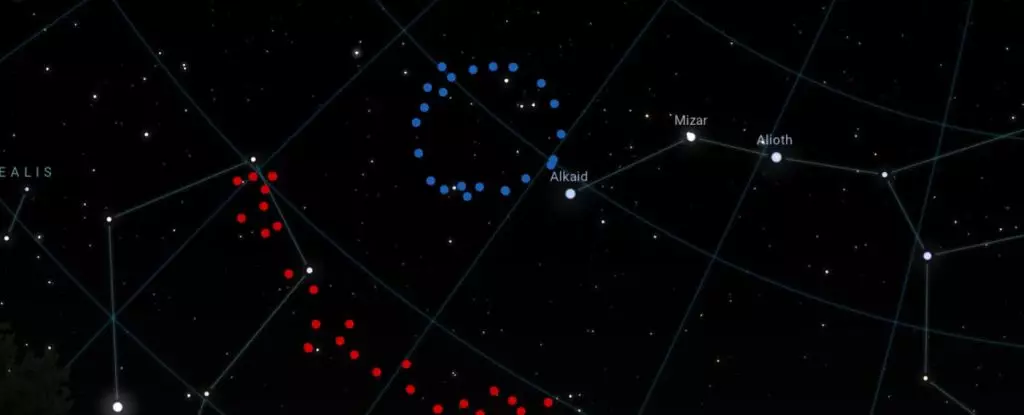The universe never ceases to amaze, and recent discoveries have added layers of complexity to our understanding of cosmological structures. At the forefront of this astronomical revelation is a colossal entity aptly dubbed the “Big Ring.” This immense formation consists of galaxies, spanning an astonishing diameter of 1.3 billion light-years, and poses significant challenges to established cosmological theories. Astronomers, led by Alexia Lopez of the University of Central Lancashire, presented their findings at the American Astronomical Society’s meeting in January 2024, igniting discussions among researchers about the future of the cosmos and the very fabric of reality itself.
The light that reached us from this colossal formation has journeyed for 6.9 billion years, a time frame that impressively illustrates the vastness of outer space. What sets the Big Ring apart from similar formations, such as Baryon Acoustic Oscillations (BAOs), is its unique morphology. Unlike BAOs, which take on a spherical shape due to the acoustic waves from the early universe, the Big Ring presents an enigmatic corkscrew structure. This peculiarity leads to the critical question: what does this mean for our understanding of cosmic evolution?
Breaking Down the Big Ring
The Big Ring’s discovery, alongside a previous find known as the Giant Arc, throws a wrench into the long-held Cosmological Principle. This principle states that the universe should appear homogeneous and isotropic when viewed on a large enough scale. However, the sheer scale and distinct shapes of both the Big Ring and the Giant Arc challenge the current limits of cosmological structures, which are theoretically capped at around 1.2 billion light-years. Lopez’s observation that these structures exceed this size by a considerable margin raises fundamental questions about the accuracy of our existing cosmological models.
Are we witnessing a new frontier in galactic formations or merely random configurations of galaxies? The likelihood of such massive structures emerging randomly seems low. The patterns embedded within these formations may hold critical clues about our universe’s evolution and properties.
Shifting the Paradigm
Lopez’s findings beckon an examination of alternative cosmological models to interpret these unprecedented structures. One such theory is Roger Penrose’s conformal cyclic cosmology, which postulates that the universe undergoes endless cycles of expansion, paving the way for complex structures like the Big Ring. However, this model also faces theoretical hurdles, limiting its ability to offer concrete answers.
Another intriguing possibility is that these structures could represent topological defects in space-time, specifically cosmic strings. These hypothetical entities may be akin to “wrinkles” formed during the universe’s infancy, and while physical evidence remains scant, the theoretical framework suggesting their existence offers tantalizing prospects. Finding a deeper consensus to explain these formations requires creative input and collaborative efforts across various fields, from astrophysics to mathematical cosmology.
The Road Ahead
As researchers continue to scrutinize these newfound structures, there’s an underlying call for more comprehensive observational programs. By identifying additional formations that align with the characteristics of the Big Ring and the Giant Arc, scientists hope to draw connections between these discoveries and existing cosmological principles. Lopez’s ambition to discover galactic arrangements on a similar scale elsewhere in the universe accentuates the urgency of further investigation.
This quest isn’t merely academic; it promises to redefine our philosophical narrative about the universe. The emergence of structures that challenge the conventional understanding of the cosmos invites not just scientific curiosity, but a heartfelt wonder about the underlying order—if there is one—behind the apparent chaos of the universe. It’s a journey into the unknown, one where prudence and imagination must intertwine to lead us forward.
Astronomers and cosmologists face the delicate balance of remaining grounded in empirical research while embracing the speculative possibilities that arise from their discoveries. The Big Ring serves as a monumental touchstone for future exploration and reflects the evolving nature of science, where established truths may give way to revolutionary ideas. The path may be fraught with uncertainty, yet it also glimmers with the promise of profound insights into our universe and beyond.


Leave a Reply